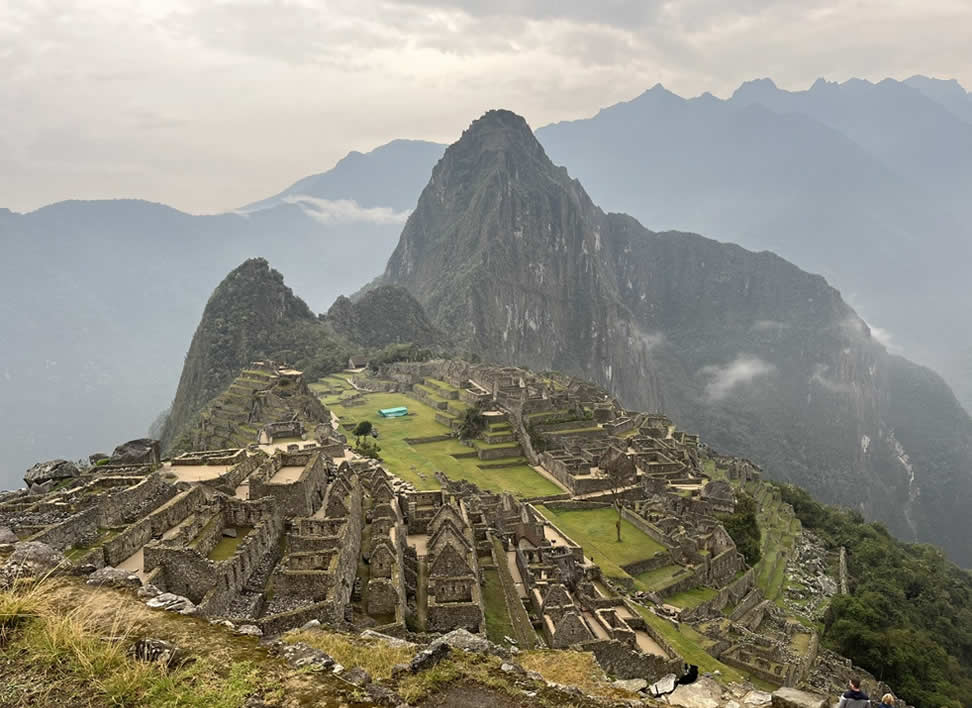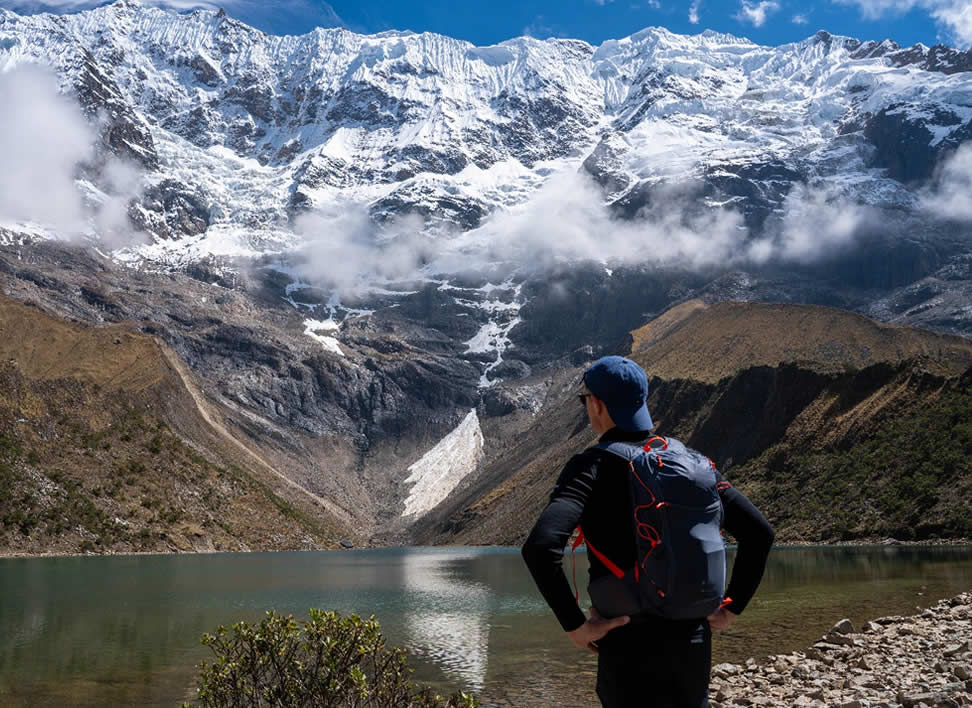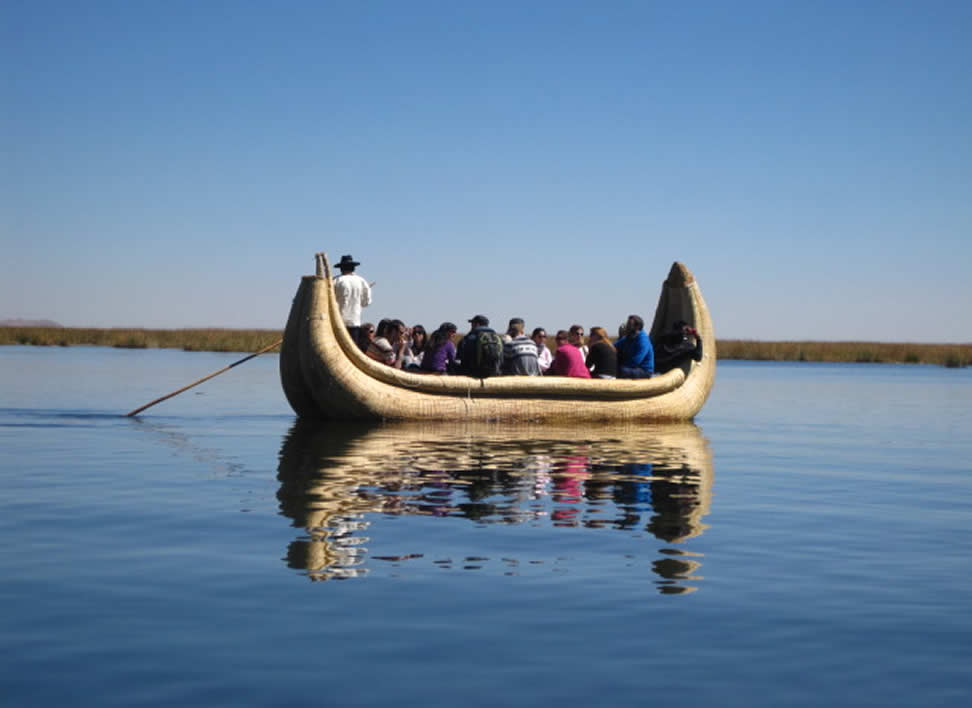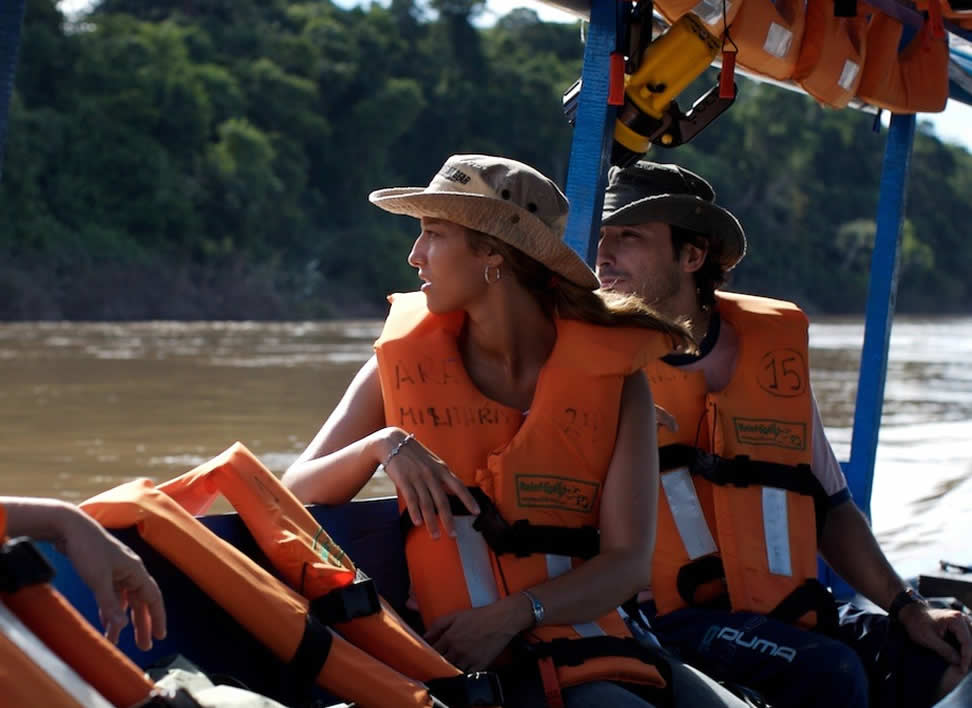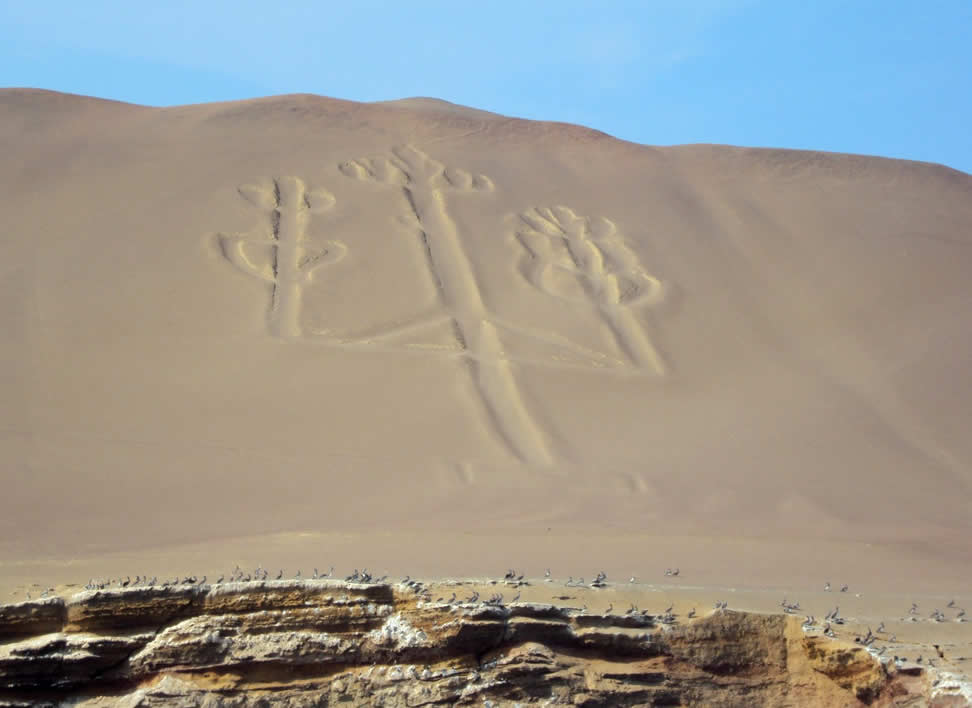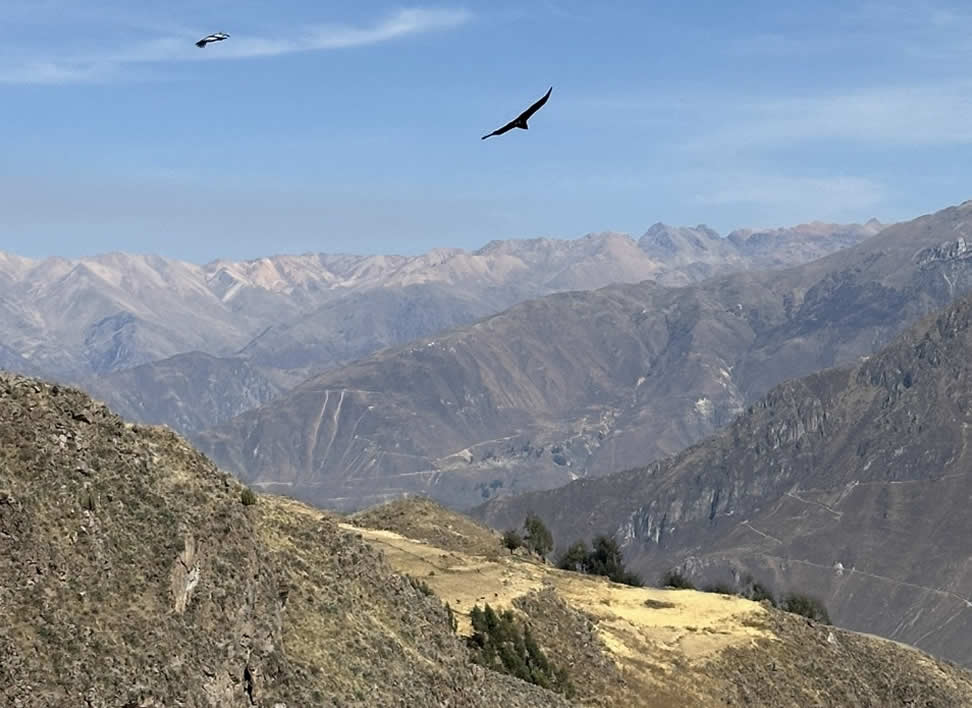23 DAY ITINERY: COMPLETE NORTH AND SOUTH OF PERU
23 DAY ITINERY: COMPLETE NORTH AND SOUTH OF PERU
Day 1: Arrival in Lima
Arrival at Jorge Chávez International Airport in Lima, where our representative will give you a warm welcome to the land of the Incas. Private transfer to your selected hotel in the exclusive districts of Miraflores or Barranco, located along the Pacific Ocean. Lima, the former “City of Kings” and current Peruvian capital, is home to more than ten million inhabitants and represents the perfect meeting point between historical tradition and Latin American culinary innovation. Rest at your hotel to recover from your journey and prepare for the adventure that will begin the following day.
Day 2: City Tour in Lima
After breakfast, tour of Lima’s main attractions. Visit to the historic center, a UNESCO World Heritage site, where you’ll admire the Plaza Mayor, the baroque-style Cathedral built in 1649, the Government Palace where the traditional changing of the guard takes place daily, and the San Francisco Convent with its impressive catacombs that housed thousands of human remains during the colonial period. Lunch at a traditional restaurant to taste the famous Lima cuisine, recognized worldwide. In the afternoon, tour of the modern districts of Miraflores and Barranco, with time to appreciate the Park of Love with its sculpture “The Kiss” and the boardwalk with spectacular views of the Pacific Ocean. In Barranco, the city’s bohemian quarter, you can observe its colorful republican mansions, the Bridge of Sighs, and the Bajada de los Baños. Return to the hotel and free evening to explore Lima’s vibrant nightlife or rest.
NORTH ROUTE
Day 3: Lima – Flight to Trujillo
Breakfast at the hotel. Transfer to the airport to take your flight to Trujillo, known as the “City of Eternal Spring” for its pleasant climate, capital of the marinera dance, and home to important pre-Hispanic cultures. Upon arrival, reception and transfer to your hotel. In the afternoon, city tour of Trujillo’s historic center, characterized by its colonial mansions with colorful facades and emblematic carved wooden balconies. You will visit the Plaza de Armas, one of the largest in the country, the Cathedral, the Urquiaga House (former House of Emancipation), the House of Emancipation, and the Toy Museum, with a fascinating collection of traditional Peruvian toys. Free time for dinner at one of the restaurants offering traditional northern dishes such as cabrito (goat stew), shambar (bean soup), or arroz con pato (duck with rice). Accommodation.
Day 4: Chan Chan and Temples of the Sun and Moon
Full day dedicated to exploring the archaeological wonders of Trujillo. In the morning, visit to Chan Chan, the largest mud city in America and former capital of the Chimú Kingdom (1200-1470 AD). This impressive adobe citadel, declared a UNESCO World Heritage Site, covers an area of 20 km² and shows the advanced urban organization and sophisticated hydraulic system developed by this pre-Incan culture. Tour of the Nik-An Palace, the only one of the ten royal palaces restored and open to the public, observing its impressive geometric and zoological reliefs that decorate walls up to 9 meters high. Lunch in Huanchaco, a traditional fishing cove where you can observe the ancestral “caballitos de totora” (reed boats), vessels used for more than 3,000 years. Here you’ll have the opportunity to taste exquisite fresh fish and seafood dishes. In the afternoon, visit to the archaeological complex of the Temples of the Sun and Moon, main ceremonial centers of the Moche culture (100-800 AD). The Temple of the Moon impresses with its polychrome murals representing the iconography of the fearsome Degollador God. The tour also includes a visit to the site museum that exhibits valuable Moche ceramic pieces and gold work. Return to your hotel in Trujillo.
Day 5: Trujillo – El Brujo – Chiclayo
After breakfast, departure to Chiclayo with an important stop at the El Brujo archaeological complex, located about 60 km north of Trujillo in the Chicama Valley. This important Moche ceremonial center is famous for the 2006 discovery of the “Lady of Cao,” a mummy of a Moche ruler with extraordinary tattoos on her arms and legs, exhibited in a modern site museum along with the gold, silver, and copper jewelry and ornaments that accompanied her. The visit includes a tour of Huaca Cao Viejo, an adobe pyramid decorated with impressive polychrome reliefs depicting complex ritual scenes. After the visit, continuation of the journey to Chiclayo (approximately 4 hours in total). Arrival and check-in at your hotel. Chiclayo, known as the “City of Friendship,” is the capital of the Lambayeque region and stands out for its vibrant commerce and excellent gastronomy. Free time to explore the Plaza de Armas and enjoy typical dishes such as arroz con pato (duck with rice), espesado (thick corn soup), or the emblematic northern ceviches. Accommodation in Chiclayo.
Day 6: Sipán, Túcume, and Sicán
Full day dedicated to discovering the pre-Hispanic cultures of Lambayeque. The day begins with a visit to the Royal Tombs of Sipán Museum, considered one of the best museums in South America, where the jewelry and ornaments found in the tomb of the Lord of Sipán, a Moche ruler whose discovery in 1987 revolutionized Peruvian archaeology, are exhibited. The museum, designed as a replica of a Moche pyramid, houses more than 2,000 pieces of gold, silver, and copper, as well as the exact reconstruction of the burial. Continuation to the archaeological complex of Túcume, an impressive ceremonial center of the Lambayeque culture (800-1350 AD) known as the “Valley of the Pyramids” for its 26 pyramidal structures distributed over 220 hectares. Ascent to Cerro Purgatorio for a panoramic view of the complex. Regional lunch where you can taste traditional Lambayeque dishes. In the afternoon, visit to the National Sicán Museum in Ferreñafe, which displays valuable pieces from the culture of the same name, including the famous funeral mask of the Lord of Sicán with its characteristic winged eyes. The museum explains in detail aspects such as metallurgy, ceramics, and the worldview of this culture that flourished between 750 and 1375 AD. Return to your hotel in Chiclayo.
Day 7: Chiclayo – Chachapoyas
Early breakfast and departure in private service to Chachapoyas, capital of the Amazonas department and known as the “Land of the cloud people” (approximately 9-10 hours). This long but fascinating journey crosses diverse ecosystems, from the desert coast, through rice valleys, to the Andean-Amazonian cloud forests. The route follows part of the ancient Inca road of Qhapaq Ñan that connected these territories. Strategic stops will be made to stretch your legs, take photographs of the changing landscape, and have lunch (included) at a local restaurant. During the journey, you will cross the imposing Marañón River, one of the main tributaries of the Amazon, and reach the Barro Negro pass at 3,600 masl, from where you can observe impressive views of the surrounding mountains. Arrival in Chachapoyas at sunset and transfer to your hotel. This charming colonial city, founded in 1538, is characterized by its houses with wooden balconies and red tile roofs. Free time to rest and acclimatize to the altitude (2,335 masl).
Day 8: Kuélap Fortress
After breakfast, full-day excursion to the imposing Kuélap Fortress, considered the “Machu Picchu of the north” and the main vestige of the Chachapoyas culture (800-1470 AD). The approximately 2-hour journey will take you to the station of the modern cable car inaugurated in 2017, which facilitates access to this magnificent archaeological complex located at 3,000 masl. The cable car covers 4 km in just 20 minutes, providing spectacular views of the Utcubamba valley. During the approximately 3-hour guided visit, you will explore more than 400 circular structures distributed over 5 hectares, ceremonial plazas, and the enigmatic Tintero, a conical structure possibly astronomical, all protected by walls up to 20 meters high and built with more than 40 million limestone blocks. You will observe the characteristic geometric friezes and unique architectural details such as the false vaults. Box lunch enjoying the spectacular surrounding landscape. Return to Chachapoyas in the afternoon, with an optional stop in the community of María to learn about traditional weaving techniques.
Day 9: Gocta Waterfall
Early departure to the village of Cocachimba (approximately 1 hour). From here, moderate hike of approximately 2.5 hours through lush cloud forests where you can observe a great diversity of orchids, ferns, and with luck, the striking Andean cock-of-the-rock (Peru’s national bird) and endemic monkeys such as the yellow-tailed woolly monkey. The trail offers several viewpoints with partial views of the waterfall until reaching the base of the impressive Gocta waterfall, one of the highest in the world with its 771 meters of free fall, “rediscovered” for the world in 2005 although it was always known by local inhabitants, who maintained legends about a mermaid that guarded a treasure in its waters. Time to contemplate the majesty of the waterfall, take photographs, and if conditions allow, take a refreshing bath in the natural pools formed at its base. Box lunch in the midst of this spectacular natural setting. In the afternoon, return to Chachapoyas. Free evening to enjoy the main square and try regional dishes such as juane de gallina (chicken wrapped in bijao leaves), purtumute (mixed beans and corn), or the famous cuy con papas (guinea pig with potatoes).
Day 10: Chachapoyas – Cajamarca
Breakfast and early departure to Cajamarca (approximately 8 hours). The route offers spectacular landscapes of the northeastern Peruvian Andes, crossing fertile valleys, cloud forests, and high mountain areas. The journey includes crossing the impressive Marañón Valley, with its varied microclimates that allow the cultivation of diverse products from coffee and cacao to avocados and custard apples. Stops at strategic viewpoints such as the Calla Calla pass at 3,500 masl and lunch en route (included) at a local restaurant where you can taste traditional dishes from the area. Arrival in Cajamarca, the historic city where the encounter between the Andean and European worlds took place with the capture of Inca Atahualpa in 1532, an event that marked the beginning of the Spanish conquest. Check-in at your hotel and free time for a first exploration of the Plaza de Armas and its surroundings, admiring colonial buildings such as the Cathedral and the churches of San Francisco and Belén. Cajamarca is also famous for its dairy products, so don’t miss trying its cheeses, butter, and manjar blanco (dulce de leche).
Day 11: Cajamarca – Ransom Room – Huaraz
In the morning, visit to the main attractions of Cajamarca, including the famous Ransom Room, possibly the only Inca structure preserved in the city, where Inca Atahualpa offered to fill the room with gold and silver in exchange for his freedom. The red line marking how high it should be filled with treasures is still visible on its walls. Continuation to the church of San Francisco, the monumental complex of Belén with its hospital, church, and the former Women’s and Men’s Rooms, now converted into museums, and the nearby Otuzco Windows, an ancient pre-Inca cemetery with niches carved into the volcanic rock that resemble small windows. You will also visit Santa Apolonia Hill, a natural viewpoint of the city with vestiges of an ancient pre-Hispanic ceremonial center called “Rumitiana.” Lunch at a local restaurant where you can taste the typical green broth and cecina shilpida (sun-dried beef). In the afternoon, start of the journey to Huaraz (approximately 6-7 hours), crossing spectacular Andean landscapes, including the Pato Canyon with its impressive rock formations. Arrival in Huaraz, “Peru’s Mountaineering Capital,” and transfer to your hotel to rest.
Day 12: Llanganuco Lagoons and Huascarán National Park
After breakfast, full-day excursion to Huascarán National Park, declared a UNESCO World Heritage Site in 1985. The journey will take you through the Callejón de Huaylas with panoramic views of the Cordillera Blanca, the highest tropical mountain range in the world, including Huascarán, Peru’s highest mountain (6,768 masl). Stop in Carhuaz to try its famous ice cream made with exotic fruits and in Old Yungay, a town that was buried after the avalanche caused by the 1970 earthquake, now converted into a memorial. The tour continues to the spectacular Llanganuco lagoons: Chinancocha and Orconcocha, of intense turquoise color due to minerals from the melting glaciers, located at the foot of Mount Huascarán. Walk around Chinancocha lagoon among queñuales, native trees adapted to the altitude. If time permits, ascent to the Portachuelo viewpoint (4,767 masl) to enjoy panoramic views of snow-capped peaks such as Huascarán, Huandoy, Pisco, and Chopicalqui. Box lunch. During the tour, possibility to observe the Andean flora and fauna, including the emblematic Andean condor. Return to Huaraz at sunset.
Day 13: Chavín de Huántar Archaeological Site
Early departure to the important archaeological site of Chavín de Huántar, cradle of one of the oldest and most enigmatic civilizations of the Andes (approximately 3 hours). The route offers impressive landscapes while crossing the Cahuish tunnel, excavated in the Cordillera Blanca at 4,516 masl, and descending toward the Mosna River valley. Guided visit to this ceremonial center built approximately in 1200 BC, declared a World Heritage Site, where you can appreciate the Lanzón Monolítico, an impressive 4.5-meter-high sculpture with anthropomorphic and zoomorphic representations, the Cabezas Clavas, lithic sculptures that adorned the exterior walls, and the network of underground passages known as galleries, designed to create acoustic effects during ceremonies. Visit to the modern site museum that exhibits original pieces such as the Raimondi Stele and the Tello Obelisk, extraordinary manifestations of Chavín lithic art. Lunch at a local restaurant where you can taste the picante de cuy (spicy guinea pig), a typical dish of the region. Return to Huaraz. Free afternoon to rest or explore the artisan market where you’ll find colorful textiles, ceramics, and silver jewelry with Andean designs.
Day 14: Huaraz – Lima – Flight to Arequipa
Breakfast at the hotel. Land transfer to Lima (approximately 8 hours) via the North Pan-American Highway, with panoramic views of the Pacific Ocean in several stretches, or alternatively, if available, flight from Anta-Huaraz Airport to Lima (limited service certain days of the week). Connection with flight to Arequipa, the “White City.” Upon arrival, reception and transfer to your hotel in the historic center. Free time for a first exploration of this beautiful colonial city built with sillar, the characteristic white volcanic stone of the region. We recommend a walk through the Plaza de Armas, one of the most beautiful in Peru, surrounded by colonial portals and dominated by the imposing Cathedral. Welcome dinner with a tasting of delicious Arequipa cuisine, including emblematic dishes such as rocoto relleno (stuffed spicy pepper), ocopa arequipeña (potato dish with creamy sauce), adobo (marinated pork), and chupe de camarones (shrimp chowder).
SOUTH ROUTE
Day 15: City Tour in Arequipa
After breakfast, guided tour of Arequipa’s main attractions. Visit to the Santa Catalina Monastery, a true citadel within the city with cobblestone streets, squares, and courtyards that have remained intact for centuries. This impressive religious complex founded in 1579 occupies an area of more than 20,000 m² and housed women from the Spanish elite who opted for religious life. Continuation to the Andean Sanctuaries Museum of the Catholic University of Santa María, where you will meet “Juanita,” the mummy of an Inca girl sacrificed approximately in 1450 AD, perfectly preserved thanks to the low temperatures of Mount Ampato where she was found in 1995. The museum explains in detail the Inca practice of Capacocha or human sacrifices. In the afternoon, visit to the Yanahuara viewpoint, which offers a panoramic view of the city with the Misti, Chachani, and Pichu Pichu volcanoes as a backdrop, and to the colonial district of San Lázaro, the founding neighborhood of Arequipa with its picturesque sillar streets. Return to the hotel and free time to enjoy the city at your own pace, perhaps visiting a traditional picantería to taste more dishes of Arequipa’s rich gastronomy.
Day 16: Arequipa – Colca Canyon
Early departure to the Colca Canyon, one of the deepest in the world at 3,400 meters deep. The route crosses the picturesque highlands and the Salinas and Aguada Blanca National Reserve, where you can spot vicuñas and alpacas in their natural habitat. These South American camelids are highly valued for their fine wool, especially the vicuña, which produces the finest animal fiber in the world. Stop at the Patapampa viewpoint, known as “the viewpoint of the volcanoes” at 4,910 masl, with spectacular views of the Andean landscape dominated by the Misti, Chachani, Hualca Hualca, Sabancaya, and Ampato volcanoes. Stop to taste traditional coca tea that helps counteract altitude sickness. Lunch at a local restaurant in Chivay, the main town in the valley. Arrival at your lodge in Chivay or Yanque. In the afternoon, possibility to visit the La Calera natural hot springs, with waters that reach 38°C and medicinal properties, to relax after the journey. Dinner and accommodation in the valley. If you coincide with a local festival, you can enjoy traditional dances such as the wititi, declared Intangible Cultural Heritage of Humanity.
Day 17: Colca Canyon – Puno
Very early breakfast to head to the Cruz del Cóndor, the best point to observe the majestic flight of the Andean condor and appreciate the impressive depth of the canyon. You will arrive just in time to witness the spectacle of these magnificent birds, which with more than 3 meters of wingspan, take advantage of the morning thermal currents to rise from the depths of the canyon. After this unforgettable experience, return to Chivay with stops in the picturesque villages of Maca and Yanque, with their colonial churches and pre-Inca terraces still in use. In Yanque, you can observe the Wititi Dance and visit its beautiful church dedicated to the Immaculate Conception. Lunch in Chivay. In the afternoon, you will board your tourist bus to Puno (approximately 6 hours), crossing beautiful landscapes of the highlands, where you can observe vicuñas, llamas, and alpacas grazing freely. During the journey, you will appreciate the gradual transition to the altiplano landscape, characterized by extensive plains and high-altitude lagoons. Arrival in Puno, located on the shores of the majestic Lake Titicaca at 3,810 masl. Transfer to your hotel to rest and acclimatize to the altitude.
Day 18: Lake Titicaca – Uros and Taquile Islands
Full day dedicated to exploring the legendary Lake Titicaca, the highest navigable lake in the world (3,812 masl) and, according to Andean mythology, cradle of the Inca civilization. Boat excursion to the fascinating floating islands of the Uros, built entirely with totora (local reed). These artificial islands, inhabited by descendants of one of the oldest peoples in America, are approximately two meters thick and are constantly renewed with new layers of totora. The inhabitants will explain their peculiar way of life and ancestral traditions, including the construction of their islands, houses, and traditional boats also made of totora. Possibility of taking a short ride in a typical boat. Continuation to Taquile Island, about two hours of navigation away. Unlike the Uros, Taquile is a natural island of solid ground where a Quechua community lives that has preserved its social organization and ancestral textile techniques. Taquile textiles, made exclusively by the men of the island, are considered Intangible Cultural Heritage of Humanity by UNESCO due to their exceptional quality and symbolism. Typical lunch on the island prepared with local products grown on their pre-Inca agricultural terraces. During the tour, you will enjoy impressive views of the crystal-clear lake surrounded by mountains. Return to Puno at sunset.
Day 19: Puno – Cusco (Bus or Train Option)
After breakfast, three options for your journey to Cusco:
OPTION 1 – TOURIST BUS: Departure by tourist bus along the “Sun Route” to Cusco. During this spectacular journey of approximately 10 hours, you will make stops at sites of interest such as Pucara, an important pre-Inca ceremonial center known for its famous ceramics, especially the little bulls, with its small lithic museum; La Raya pass (4,335 masl), the highest point of the route with panoramic views of the Andes and the watershed between the Titicaca and Amazon basins; the ruins of Raqchi, where the temple to the god Wiracocha stands out, an impressive roofed structure 92 meters long; and the “Sistine Chapel of America” in Andahuaylillas, a 17th-century church with extraordinary murals and a carved cedar ceiling covered in gold leaf. Buffet lunch included en route.
OPTION 2 – TITICACA TRAIN: Travel aboard PeruRail’s Titicaca Train, an intermediate option in comfort and price. This approximately 10-hour journey offers beautiful views of the highlands from large panoramic windows, snack and beverage service, and a stop at La Raya for photographs and handicraft purchases. Includes gourmet lunch and onboard entertainment inspired by Andean culture.
OPTION 3 – ANDEAN EXPLORER TRAIN: Luxury experience aboard PeruRail’s Andean Explorer train, one of the most luxurious trains in South America. This approximately 10-hour journey offers incomparable views of the highlands from the comfort of elegantly decorated cars in the style of the 1920s. Includes three-course gourmet lunch, afternoon tea, open bar, and onboard entertainment. The train makes a brief stop at La Raya to appreciate the magnificent landscape and buy handicrafts made by local communities.
Arrival in Cusco, ancient capital of the Inca Empire, and transfer to your hotel in the historic center.
Day 20: City Tour in Cusco
Free morning to acclimatize to the altitude of Cusco (3,399 masl). Take the opportunity to walk leisurely through its picturesque streets, visit one of its markets, or enjoy a coca tea, a traditional Andean remedy to counteract soroche or altitude sickness. In the afternoon, guided tour of the city, visiting the Plaza de Armas, surrounded by important colonial buildings built on Inca foundations; the Cathedral that houses invaluable works of colonial art, such as the famous “Lord of the Earthquakes” and Marcos Zapata’s “Last Supper” showing Jesus and the apostles eating guinea pig; and the Koricancha or Temple of the Sun, an ancient Inca religious center considered the most sacred place of the Empire, on which the Convent of Santo Domingo was built. You will admire the perfect Inca masonry that has withstood centuries and several earthquakes. Continuation to the impressive Inca ruins of the surroundings: the fortress of Sacsayhuamán, with its enormous perfectly assembled stone blocks, some of more than 100 tons; the amphitheater of Qenqo, carved into a single rock formation and used for rituals related to ancestor worship; the red fort of Puka Pukara, an ancient control post of the Inca road; and Tambomachay, known as “the baths of the Inca,” a complex of fountains and canals dedicated to the cult of water. Return to the hotel and free evening to enjoy Cusco’s vibrant nightlife, perhaps visiting a restaurant offering traditional dishes such as cuy al horno (baked guinea pig), Andean trout, or lomo saltado (stir-fried beef), accompanied by live folk music.
Day 21: Sacred Valley – Train to Aguas Calientes
Full-day excursion to the Sacred Valley of the Incas, so called for its extraordinary fertility and for having been one of the main corn production areas of the Empire. Visit to the colorful Pisac market, where you can purchase beautiful handicrafts including textiles, ceramics, silver jewelry, and reproductions of Inca antiquities, and to its impressive Inca ruins with agricultural terraces that extend along the mountainside, offering spectacular views of the valley. Buffet lunch at a country restaurant where you can taste traditional Andean dishes, possibly including pachamanca, an ancestral cooking method underground. Continuation to Ollantaytambo, one of the most monumental architectural complexes of the ancient Inca Empire, still inhabited today and maintaining its original urban layout. You will climb to its imposing archaeological zone with terraces, astronomical temples, and the unfinished “Temple of the Sun” with its pink granite monoliths of more than 40 tons transported from quarries located more than 5 km away. At the end of the afternoon, transfer to the train station to take the railway to Aguas Calientes (Machu Picchu Pueblo). The approximately 1.5-hour journey offers beautiful views of the Urubamba River winding between mountains.
Arrival in Aguas Calientes, a small town nestled between mountains that serves as a base for visiting Machu Picchu. Transfer to your hotel. This picturesque town, also officially known as Machu Picchu Pueblo, is completely oriented toward tourism with numerous restaurants, souvenir shops, and natural hot springs that give it its name. Dinner at the hotel and rest to prepare for the next day. We recommend going to bed early as the visit to Machu Picchu will begin at dawn.
Day 22: Machu Picchu – Cusco
Very early, ascent by bus along a winding road of approximately 30 minutes to the citadel of Machu Picchu, one of the Seven Wonders of the Modern World. You will arrive just in time to contemplate how the first rays of the sun progressively illuminate this masterpiece of Inca architecture, creating a unique light spectacle. The guided tour will be adapted according to the circuit available at the time of your visit (Circuit 1, 2, 3, or 4, determined by the Archaeological Park authorities). Each circuit offers different perspectives of this spectacular archaeological site, where you will discover temples, squares, palaces, workshops, stairways, and water fountains perfectly adapted to the mountainous environment.
Your guide will explain the possible functions of the main structures and will relate the theories about this mysterious city built in the 15th century and abandoned shortly after the Spanish conquest, remaining hidden from the Western world until its scientific “rediscovery” in 1911 by Hiram Bingham. You will admire masterpieces such as the Temple of the Sun, the Intiwatana (possible astronomical observatory), the Temple of the Three Windows, the Sacred Plaza, and the Temple of the Condor, noting the perfect integration between human architecture and the natural landscape.
Optionally, depending on the availability of additional tickets (which must be reserved months in advance due to capacity limitations), you can climb Huayna Picchu, the mountain that appears behind the citadel in classic photographs of Machu Picchu, or Machu Picchu Mountain, both offering extraordinary panoramic views of the archaeological complex and the surrounding valley. Free time to explore on your own or simply sit and meditate before such an impressive human work. Descent to Aguas Calientes for lunch at a local restaurant.
In the afternoon, train journey back to Ollantaytambo and private bus transfer to Cusco (approximately 2 additional hours). Arrival at your hotel in Cusco. Farewell night with dinner and folkloric show that will allow you to appreciate traditional Andean dances, accompanied by music performed with ancestral instruments such as the quena, charango, and zampoña.
Day 23: Cusco – Lima – International Flight
Breakfast at the hotel. Depending on your flight schedule, free time for last-minute shopping or personal activities. Cusco offers excellent options for souvenir shopping, especially in Andean textiles, silverware, ceramics, and folk art. You can also take the opportunity to visit some of the numerous museums that were not included in the tour, such as the Pre-Columbian Art Museum (MAP) or the Pisco Museum to learn more about this emblematic Peruvian drink.
At the arranged time, transfer to the airport to take your flight to Lima. Upon arrival in Lima, depending on your international flight schedule, possibility of a last visit to Miraflores or Barranco for last-minute shopping or a farewell lunch at one of the renowned restaurants in the capital (optional). Transfer to Jorge Chávez International Airport for your return flight. End of our services and see you soon Peru!
INCLUDES:
ACCOMMODATION
- 2 nights hotel in Lima (selected category)
- 2 nights hotel in Trujillo (selected category)
- 2 nights hotel in Chiclayo (selected category)
- 3 nights hotel in Chachapoyas (selected category)
- 1 night hotel in Cajamarca (selected category)
- 3 nights hotel in Huaraz (selected category)
- 2 nights hotel in Arequipa (selected category)
- 1 night hotel in Colca (selected category)
- 2 nights hotel in Puno (selected category)
- 3 nights hotel in Cusco (selected category)
- 1 night hotel in Aguas Calientes (selected category)
MEALS
- 22 breakfasts (all hotels)
- 1 lunch at traditional restaurant in Lima
- 1 lunch in Huanchaco (Trujillo)
- 1 regional lunch in Chiclayo
- 1 lunch en route Chiclayo-Chachapoyas
- Box lunch in Kuélap and Gocta
- 1 lunch en route Chachapoyas-Cajamarca
- 1 traditional lunch in Cajamarca
- Box lunch in Llanganuco
- 1 lunch in Chavín de Huántar
- 1 welcome dinner in Arequipa
- 1 lunch in Colca
- 1 lunch in Chivay
- 1 lunch on Taquile Island
- 1 buffet lunch on Sun Route (bus option)
- 1 lunch on train (Titicaca or Andean Explorer options)
- 1 buffet lunch in the Sacred Valley
- 1 dinner in Aguas Calientes
- 1 lunch in Aguas Calientes
- 1 dinner with folkloric show in Cusco
TRANSPORTATION
- All airport-hotel-airport transfers
- Private transportation during all indicated tours
- Land transportation Trujillo-Chiclayo-Chachapoyas-Cajamarca-Huaraz in comfortable vehicles with air conditioning
- Round-trip cable car to Kuélap
- Land or air transportation Huaraz-Lima (depending on availability)
- Land transfer Arequipa-Colca-Puno in tourist vehicles with reclining seats
- Water transport on Lake Titicaca in boats equipped with safety measures
- Puno-Cusco transportation options (tourist bus or train)
- Round-trip train ticket to Machu Picchu (service according to chosen category: Expedition, Vistadome, Sacred Valley, or Hiram Bingham)
- Bus ticket up and down to the Machu Picchu citadel
TOURS AND ENTRANCES
- City tour in Lima with professional guide including entrances to the Cathedral and San Francisco Convent
- Entrance to Chan Chan, Temples of the Sun and Moon, and Toy Museum in Trujillo
- Entrance to El Brujo Complex and Lady of Cao Museum
- Entrances to Royal Tombs Museum, Túcume, and Sicán Museum in Chiclayo
- Entrance and cable car to Kuélap
- Entrance and local guiding services at Gocta Waterfall
- Entrances to archaeological sites and museums in Cajamarca including Ransom Room and Otuzco Windows
- Entrances to Huascarán National Park and Llanganuco lagoons area
- Entrance to Chavín de Huántar and site museum
- City tour in Arequipa with professional guide including entrance to Santa Catalina Monastery and Andean Sanctuaries Museum
- Tour to Colca Canyon with entrance to Cruz del Cóndor and natural hot springs (optional)
- Full-day tour to Lake Titicaca (Uros and Taquile) with landing rights on the islands
- City tour in Cusco with professional guide including tourist ticket for access to archaeological sites
- Full-day tour to the Sacred Valley with professional guide including entrances to Pisac and Ollantaytambo
- Guided visit to Machu Picchu according to available circuit including official entrance to the Archaeological Park
- Entrance tickets to all archaeological sites mentioned in the itinerary
SERVICES
- Bilingual official tour guides (Spanish and English) specialized in each region
- Permanent assistance throughout the tour 24 hours
- Complimentary water bottles during land tours
- First aid kit in all vehicles
- Oxygen available for emergencies in high-altitude areas
- 24/7
- Professional guides certified in first aid and experienced in high-altitude tours
- Luggage handling at hotels and transportation terminals
- Detailed information package with day-to-day itinerary, emergency contacts, and travel tips
DOES NOT INCLUDE:
AIR TRANSPORTATION
- International flights to/from Peru
- Domestic flights:
- Lima – Trujillo
- Lima – Arequipa
- Cusco – Lima
- Any other internal flight not specifically mentioned
MEALS
- Lunches and dinners not specified in the program
- Alcoholic and non-alcoholic beverages during included meals
- Room service and minibar consumption in hotels
PERSONAL EXPENSES
- Tips for guides, drivers, and hotel staff (recommended: USD 5-10 per person per day for guides and USD 3-5 for drivers)
- Purchases and souvenirs
- Laundry services
- Telephone calls and internet (except where free WiFi is included in hotels)
- Optional excursions not mentioned in the program
- Additional charges for excess baggage
OTHERS
- Travel insurance (highly recommended to include coverage for trip cancellation, medical emergencies, high-altitude evacuation, and baggage loss)
- Expenses resulting from issues beyond our organization (strikes, delays, cancellations, weather conditions, natural disasters, etc.)
- Airport taxes or departure fees (normally included in air tickets)
- Excess baggage charges
- Additional tickets for Huayna Picchu or Machu Picchu Mountain (subject to availability and must be requested months in advance)
IMPORTANT:
- This itinerary includes long road distances in northern Peru. Travel times may vary according to weather conditions and road conditions.
- The route from Chachapoyas to Cajamarca and then to Huaraz involves approximately 14-15 accumulated hours of land travel over two days, crossing different ecosystems and altitudes. Routes include stretches with sharp curves.
- Visits to attractions such as Kuélap and Gocta involve medium-difficulty hikes. For Gocta, good physical condition is recommended for a hike of approximately 5-6 hours in total (round trip).
- The Kuélap cable car may suspend operations due to adverse weather conditions. In case of closure, access would be by the traditional route (2 additional hours of travel).
- For high-altitude areas such as Huaraz, Puno, and Cusco, precautions for altitude sickness (soroche) are recommended: stay well hydrated, avoid heavy meals, limit alcohol consumption, and engage in moderate activities during the first days.
- For the visit to Machu Picchu, the circuit assigned by the Archaeological Park authorities will be followed. Circuits are assigned at the time of entry and cannot be modified.
- Departures to Llanganuco lagoons and Chavín de Huántar are subject to favorable weather conditions. In the rainy season (December-March), landslides may affect some routes.
- In the northern area (Chachapoyas), rains are more intense between November and April, which can affect visibility in Kuélap and make the path to Gocta more slippery.
- Excursions on Lake Titicaca are subject to weather conditions. During the months of June to August (dry season), strong waves may occur in the afternoon.
- The Andean Explorer train operates only on certain days of the week. If you choose this option, the itinerary may be adjusted.
- For reservation, a copy of a valid passport with at least 6 months validity from the date of entry to the country is required.
- A deposit of 30% of the total value of the package is required to confirm the reservation. The balance must be paid 45 days before the start of the trip.
- Cancellation policy: 90-61 days before: 25% penalty; 60-31 days: 50%; 30-15 days: 75%; less than 15 days: 100%.
- We recommend purchasing comprehensive travel insurance that includes trip cancellation due to force majeure.
- This itinerary can be customized according to your preferences and availability, adding or removing destinations according to your interests.
- Most hotels on the circuit offer luggage storage service, allowing you to travel lighter between destinations and leave main luggage in cities like Lima or Cusco.
- In high season (June-August and local holidays), it is recommended to book at least 6 months in advance, especially to ensure availability on trains to Machu Picchu and higher category hotels.
- This itinerary combines Peru’s main tourist circuits, requiring physical adaptation to different altitudes. We recommend bringing appropriate clothing for varied climates and comfortable hiking shoes.
- In the northern circuit, accommodation is more basic than in the southern circuit, especially in Chachapoyas and Cajamarca, even in higher category hotels.
- Kuélap receives significantly fewer visitors than Machu Picchu, offering a more intimate archaeological experience.
- During the land transfers between Trujillo, Chiclayo, Chachapoyas, Cajamarca, and Huaraz, you will cross very diverse regions, from coastal desert to cloud forest and high mountains, with significant variations in temperature and climate.
- The Gocta Waterfall trek is considered moderately difficult and can be slippery, especially in rainy season. Walking sticks are recommended.
- Colca Canyon is one of the world’s deepest canyons and offers spectacular scenery with traditional villages and pre-Inca terraces still in use.
- The floating islands of Uros are a unique cultural experience, though they have become somewhat touristy. Taquile Island offers a more authentic experience of traditional Andean life.
- Machu Picchu visits have strict time regulations. The guided tour lasts approximately 2-2.5 hours, after which you will have free time within your authorized entry slot.
- Many of the sites included in this itinerary are at high altitude (3,000-4,900 meters above sea level). Acclimatization is essential to enjoy the trip. We recommend starting with lower altitude destinations when possible.
- Photography is permitted at most sites, though some museums may prohibit flash photography or charge an additional fee for camera use.
- This is a comprehensive itinerary covering most of Peru’s major attractions. While intense, it provides a thorough introduction to Peru’s diverse landscapes, history, and cultures.
- Mobile phone coverage varies throughout the route. It’s generally good in cities but may be limited in remote areas like parts of Chachapoyas and the Colca Canyon.
- For safety, we recommend avoiding wearing expensive jewelry and watches, especially in crowded tourist areas and markets.
- While Peru is generally safe for tourists, normal precautions should be taken, particularly in larger cities. Your guides will advise you on specific areas.
- Quality of roads varies significantly throughout the country. Some transfers, particularly in northern Peru, involve winding mountain roads that may be challenging for those prone to motion sickness.
